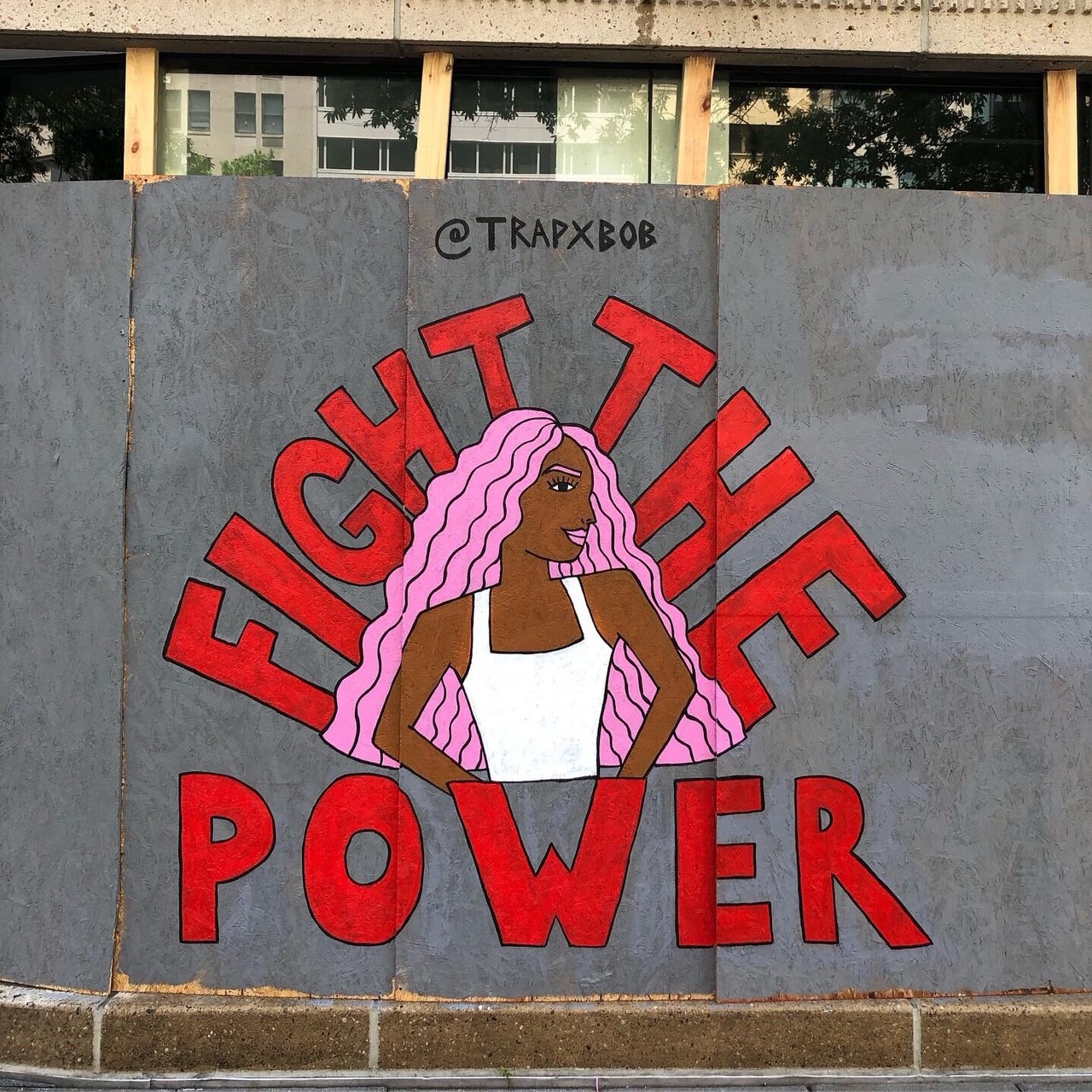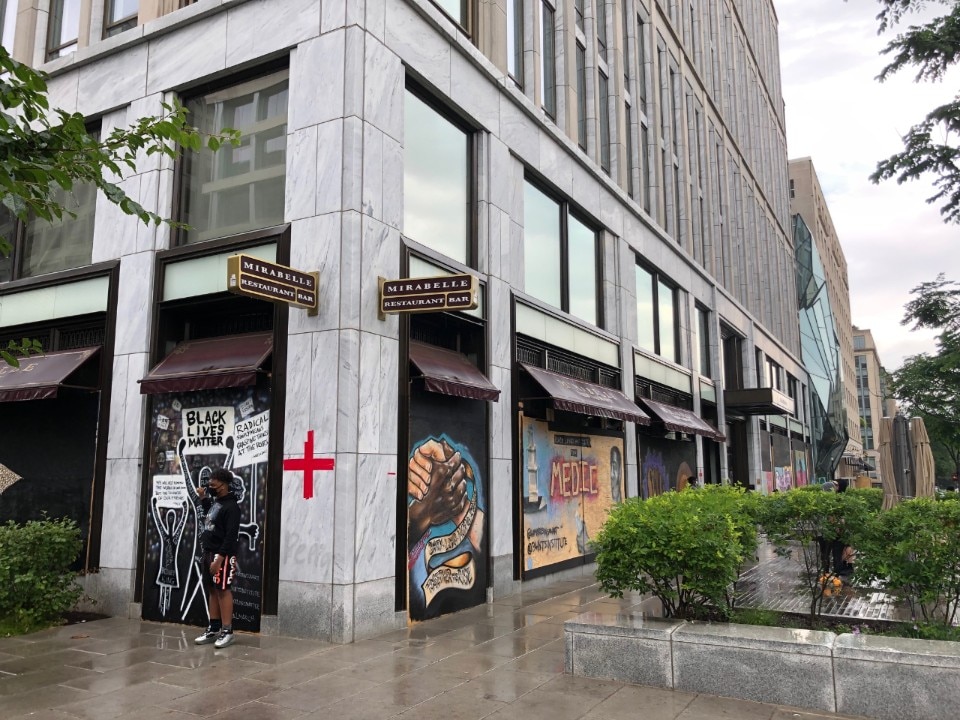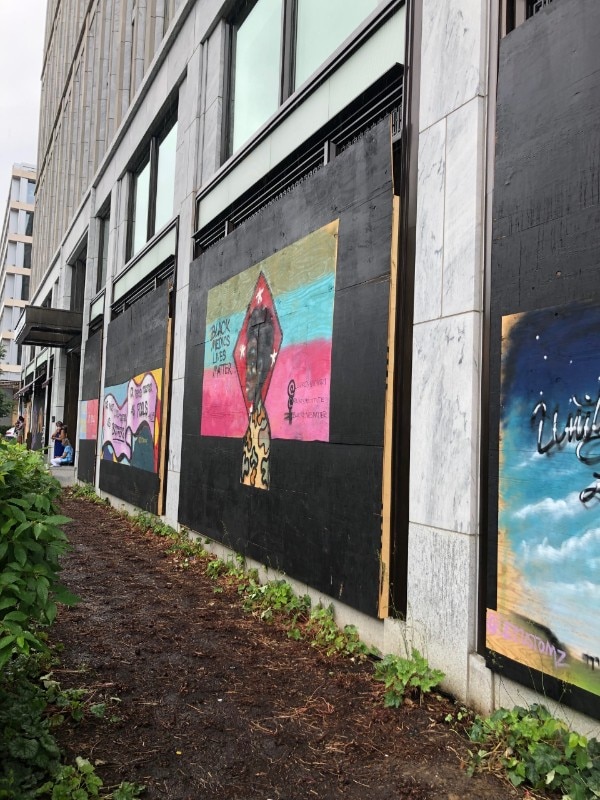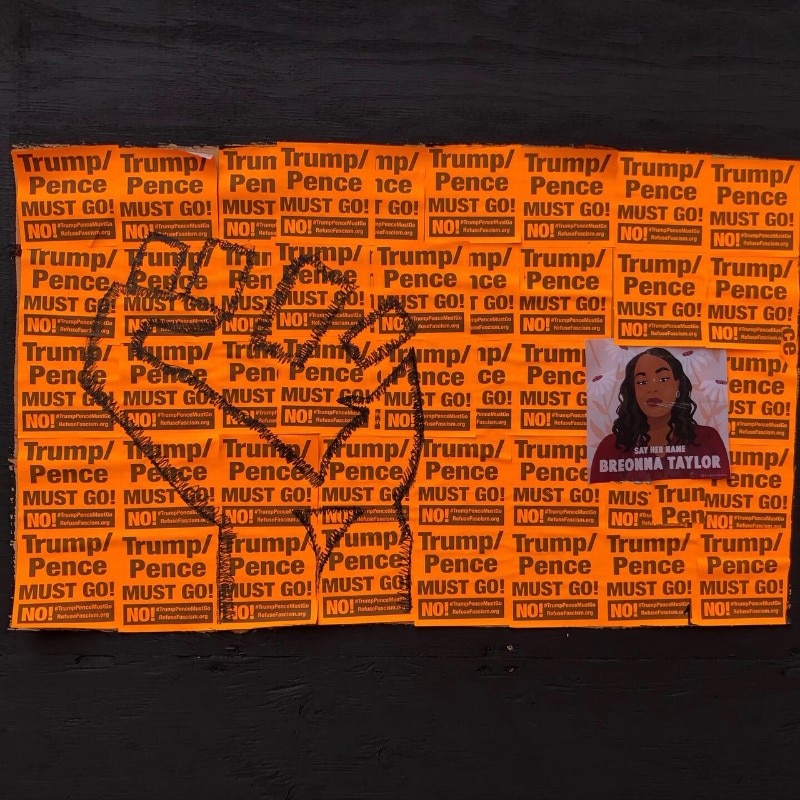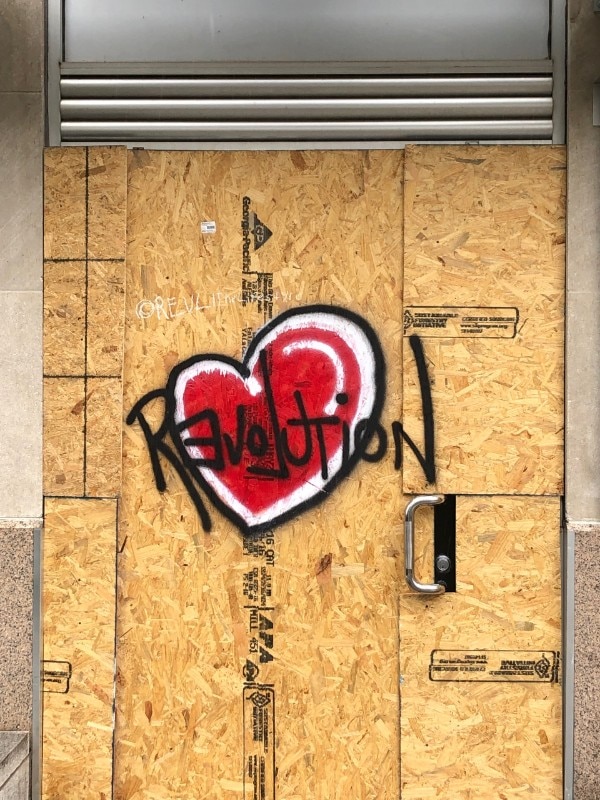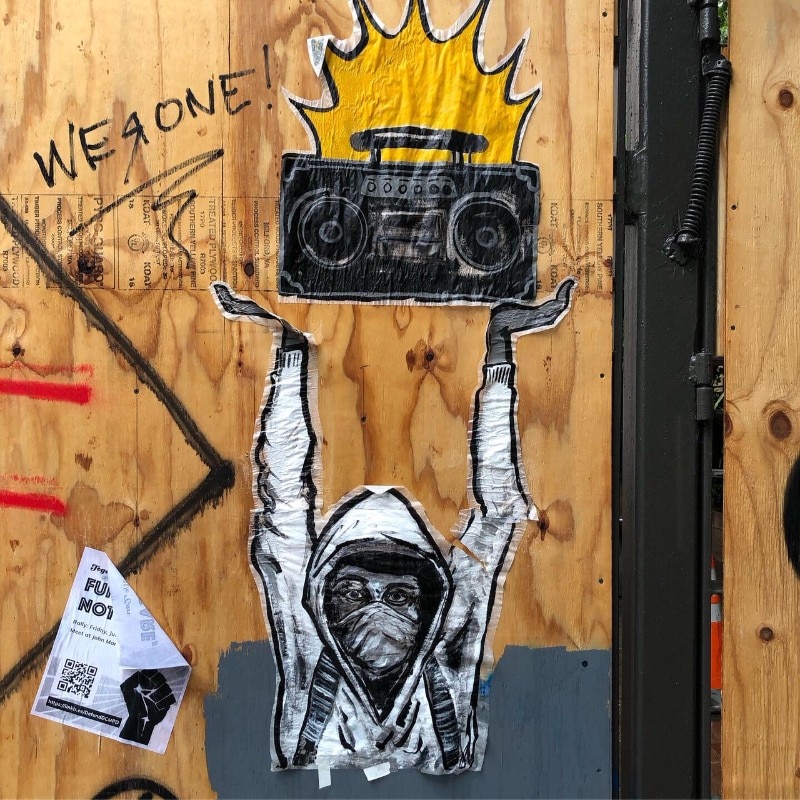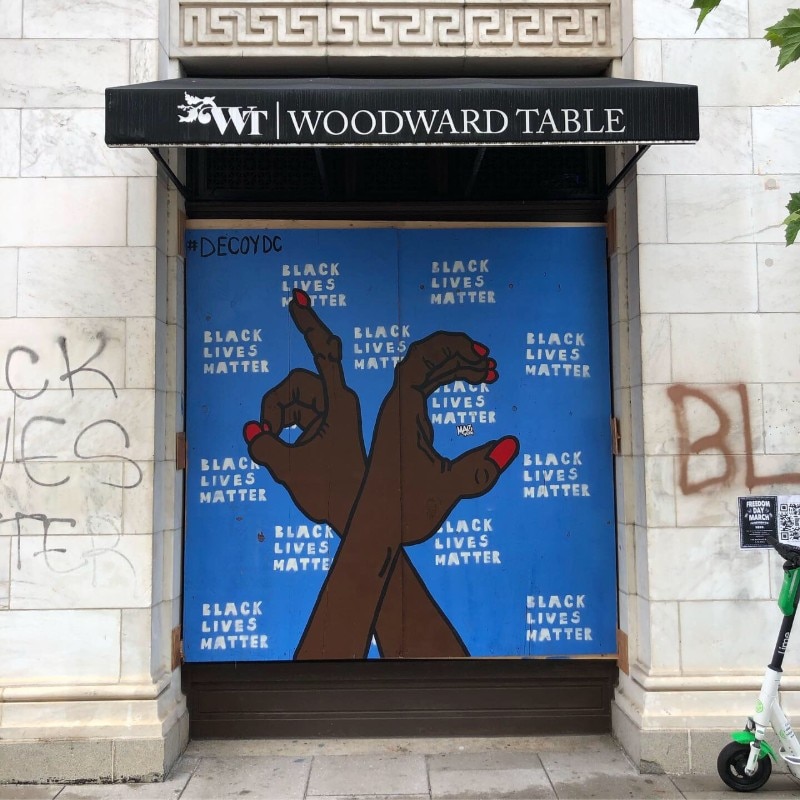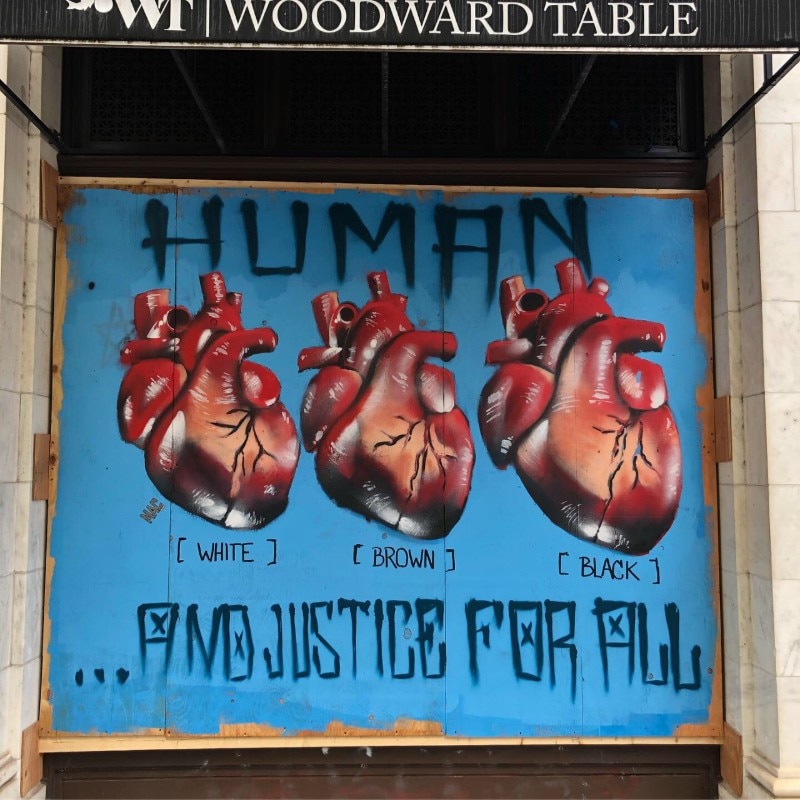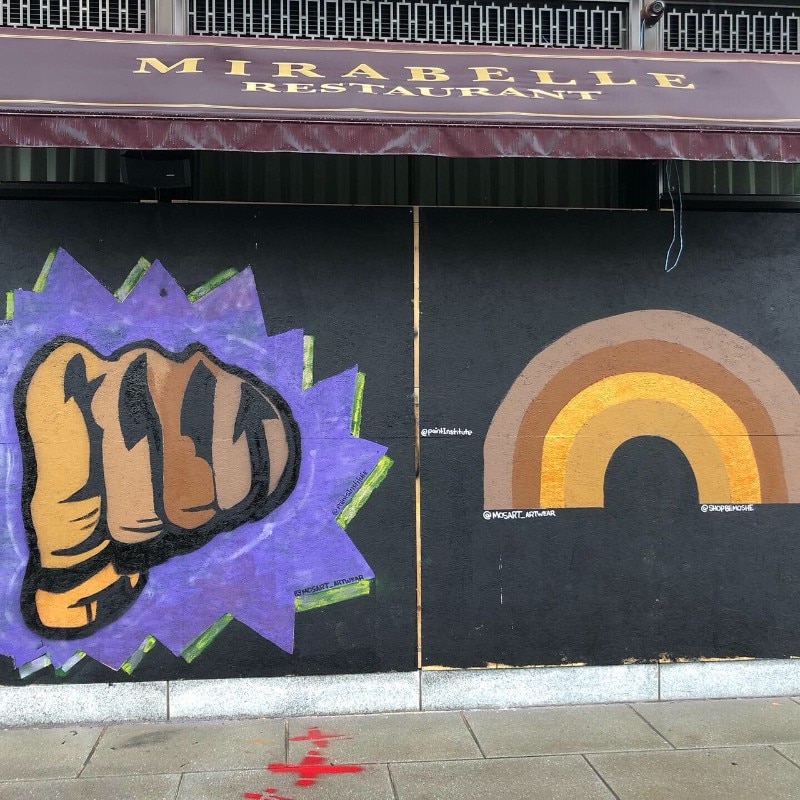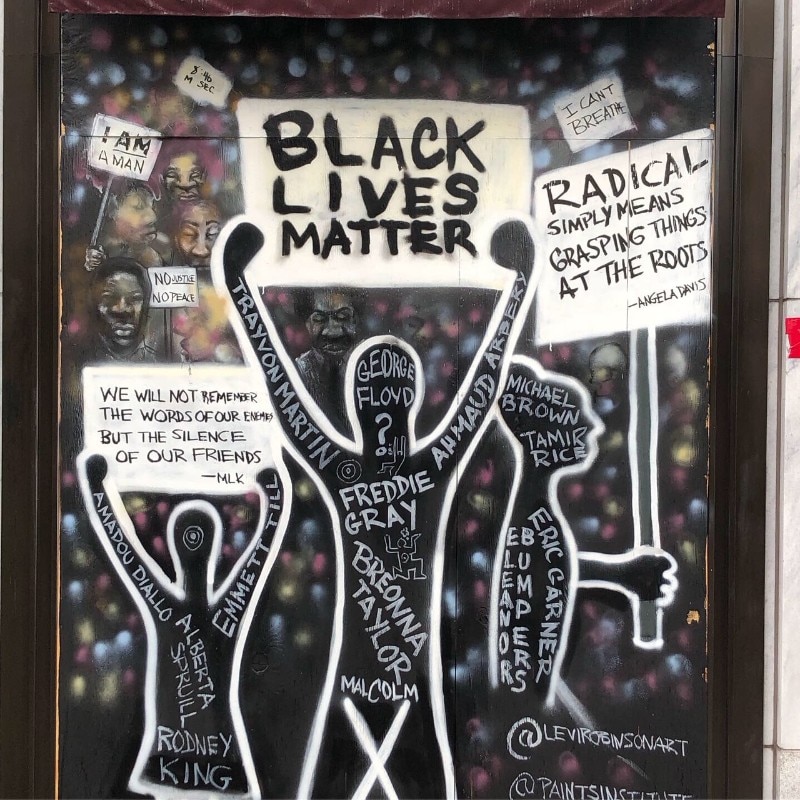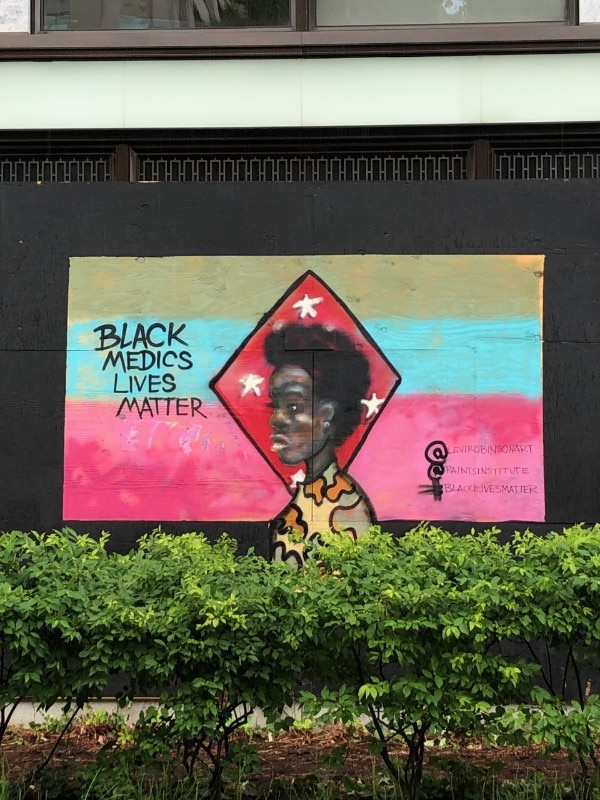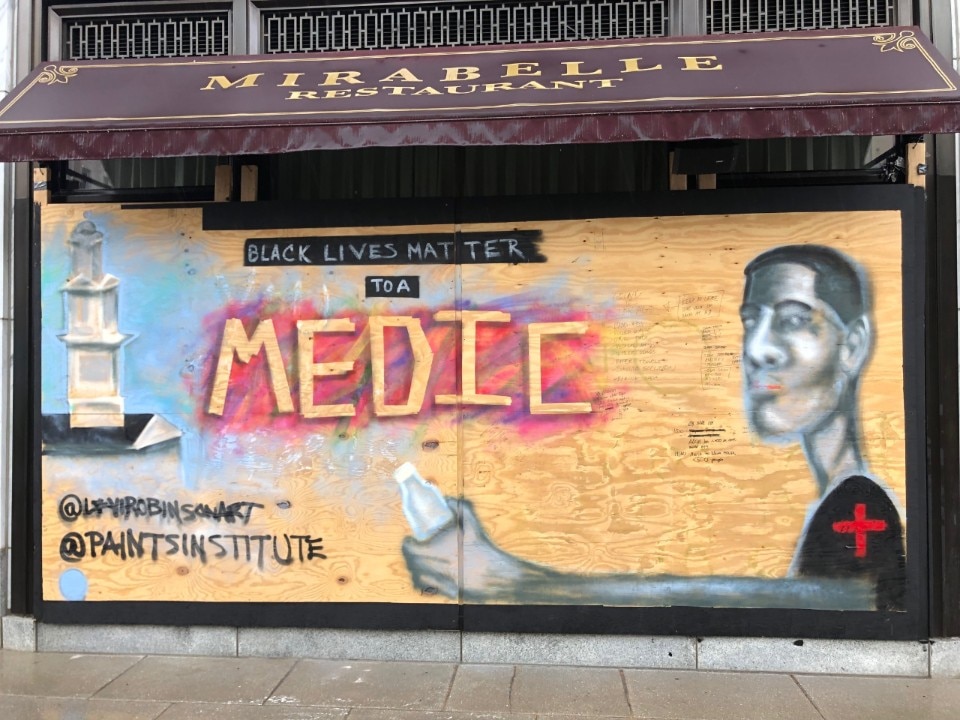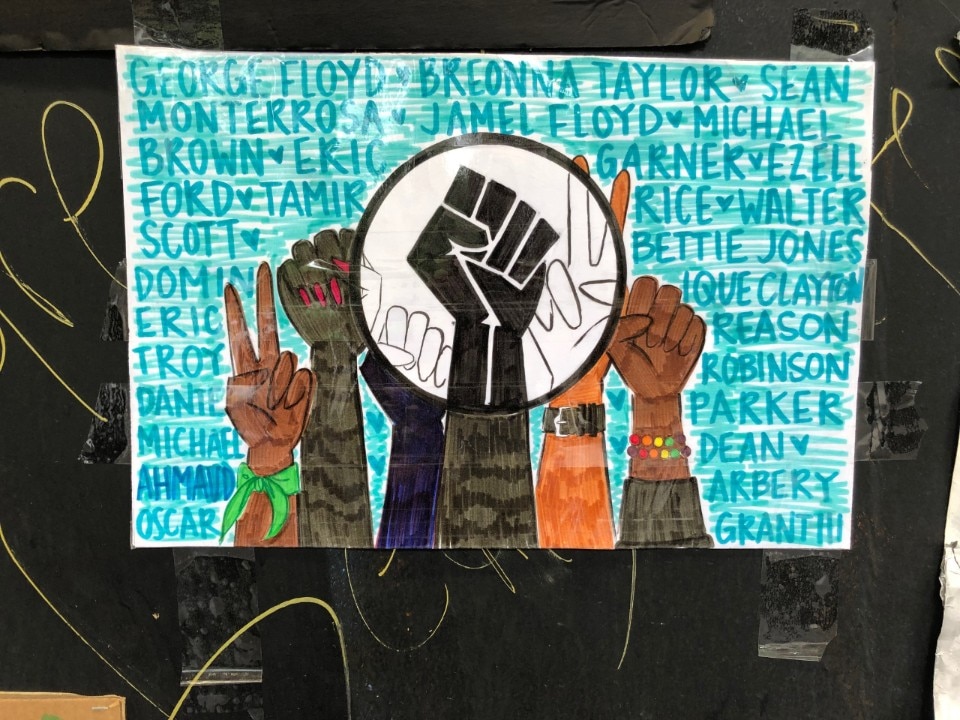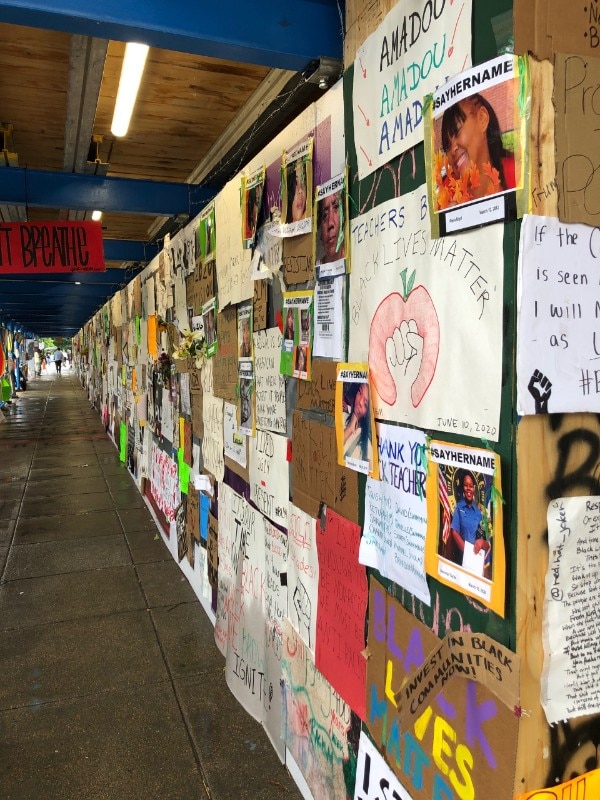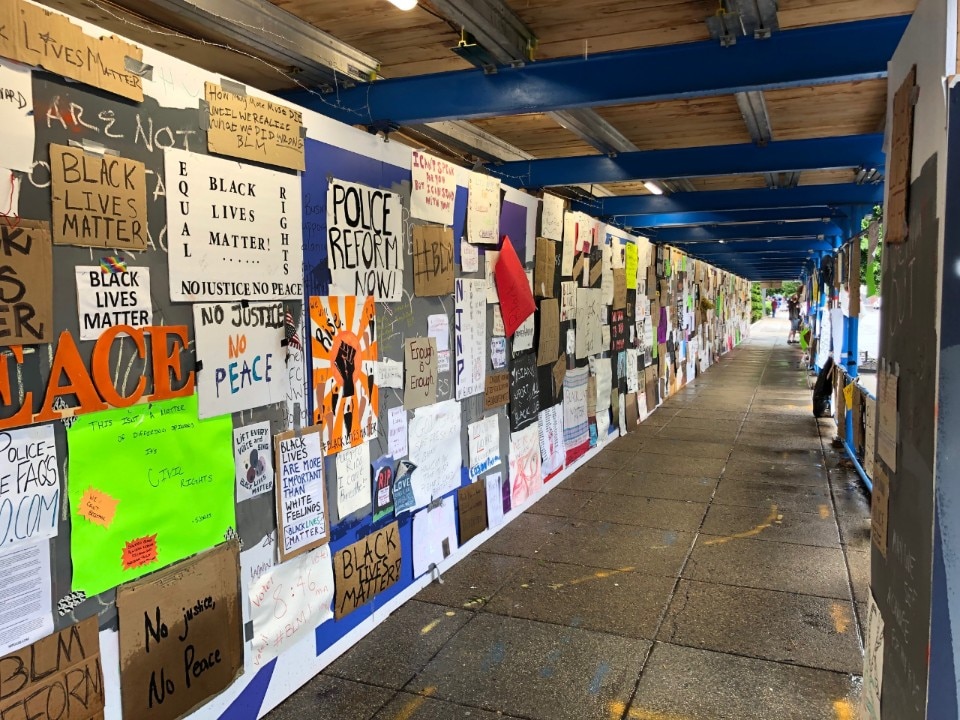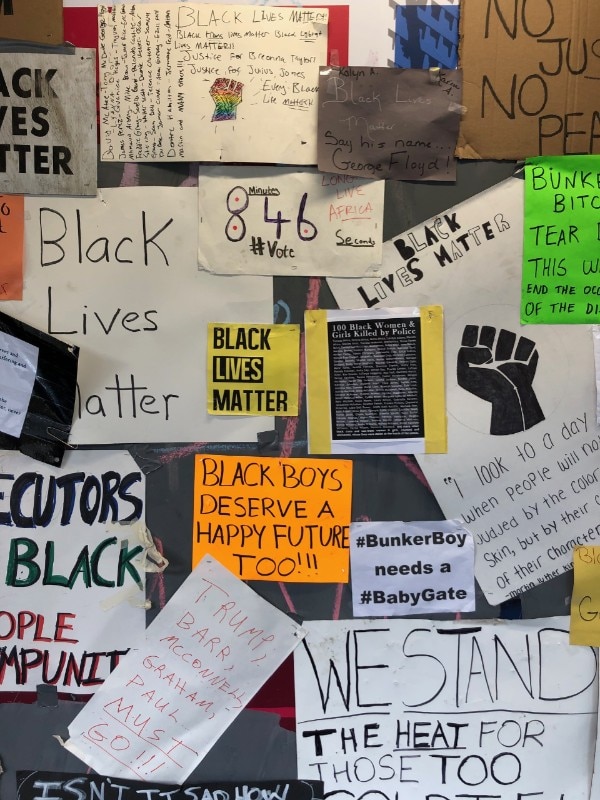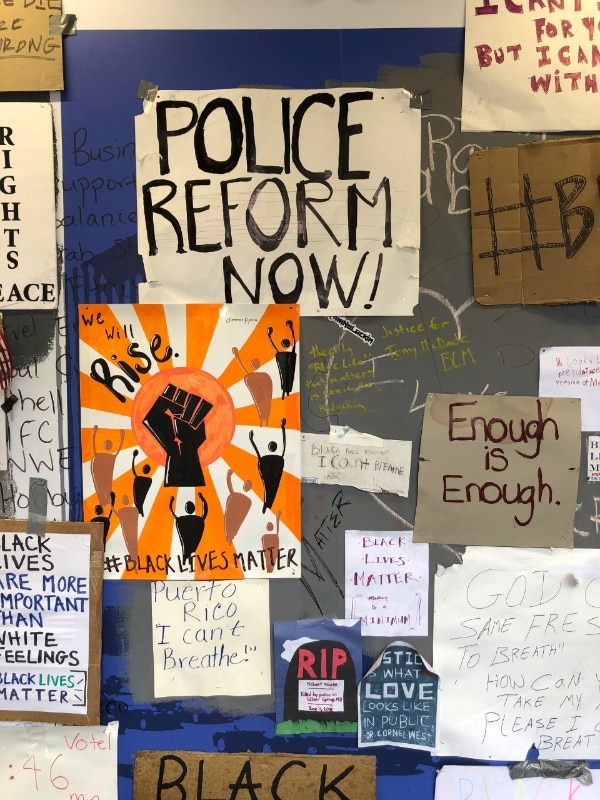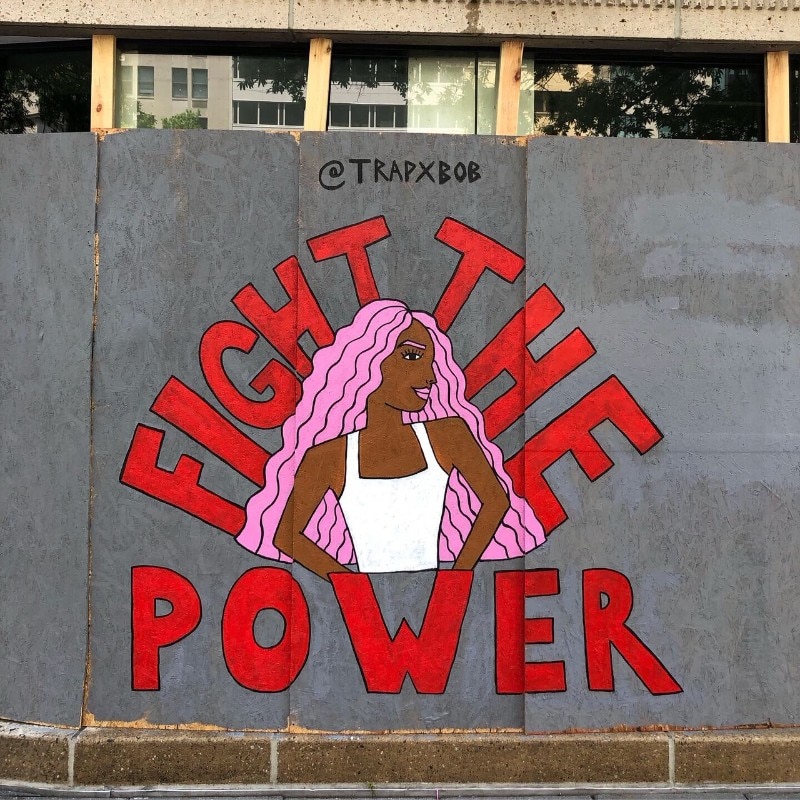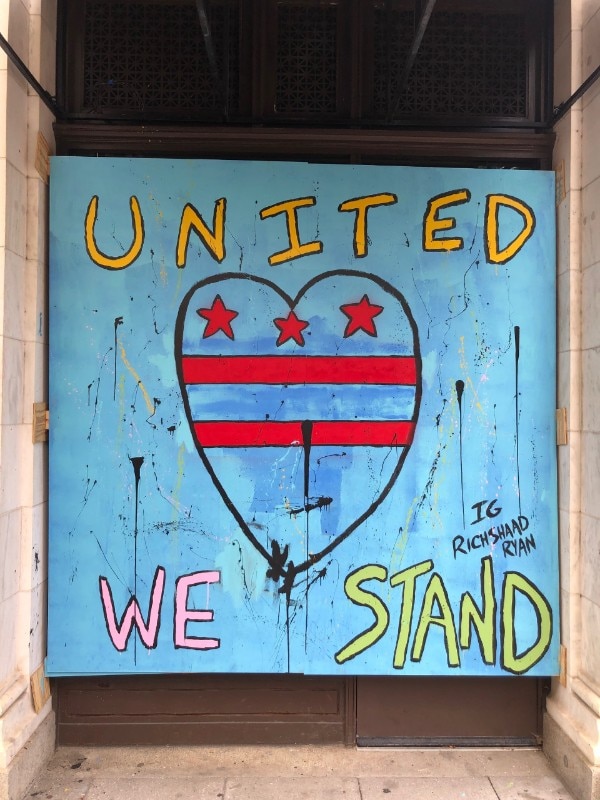Storefronts and office buildings boarded up with plywood, large chain-link fences with a menacing presence, and streets devoid of car, bus and foot traffic of everyday life, these became the palates for a group of artists and citizens who needed to express their messages. Black Lives Matter Plaza, christened by Muriel Bowser, the Mayor of Washington DC, was facilitated by renaming the space next to Lafayette Square Park in front of the White House by adding new demarcating street signs and a large super graphic of yellow street paint taking up an entire city block that proclaims ‘Black Lives Matter’.
DC street artist Decoy, saw the plywood as a “blank canvass that turned the street into a sparce and even scary space” and used this as an opportunity to “introduce color, images, creativity and a message to change the space and to soften the existing harsh environment”. The plywood boards and fence were intended to give a precise message when installed, but became, overnight, a vessel for spreading and amplifying something completely different. Protest signs, artwork, and small memorials overtook the fence, turning it into a message of solidarity, protest, anger, sadness and strength through community and human rights. The fence essentially went from a symbol of power and defense to a much more powerful symbol reclaimed by the massive crowds of people on the outside of the barrier.
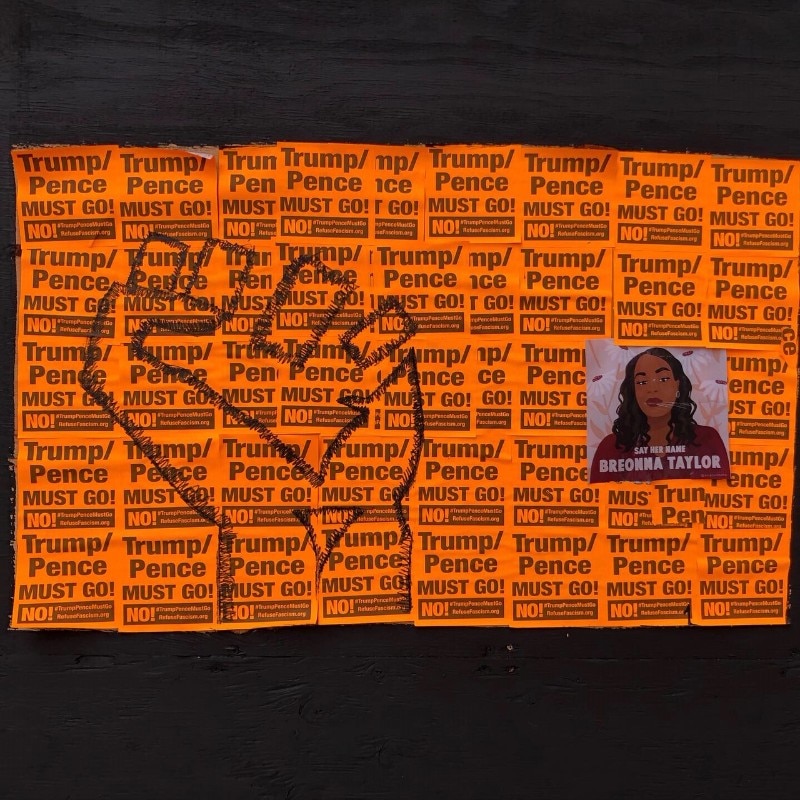
Tarek Kouddous, the founder of Radical Empathy, had the opportunity to organize a group of local artists to paint the boarded up storefront murals by partnering with the local visual-art organization Transformer, who provided the artists with honorarium while Radical Empathy did the curation. Tarek explains that “Radical Empathy is a placemaking (or is it storytelling?) startup that will vitalize people’s hyper-local community sense of belonging in both neighborhoods and workhoods. Radical Empathy will transform space into Place.”
With only a timeframe of 48 hours, six artists were gathered to paint four murals on H Street next to Black Lives Matter Plaza. Being the new ground zero with so much anger, emotion and empowerment, each artist wanted to provide their own personal message through their paintings. Artist Richshaad Ryan, with his painting United We Stand, intended to “create a space where everyone could come together to do better, but especially a space where people could stop and take a moment to just breathe.” These murals indeed became a place where people would take a moment to not only just take a deep breath to re-center themselves, but to use art as a backdrop for their own personal photos, even entire families posing for photographs next to it. Therefore, art has activated the place not only by providing a message, but by having protestors and supporters capture the space, using it as a marker for their personal message and by empowering the Spirit of Place. The BLM Plaza, becoming the ‘heart’ of the movement and protests in Washington, DC, was also used as a metaphor for artist Chris Lynch’s work Human…and Justice for All. Three beating hearts are each labeled with one word, (white), (brown), (black). The labels are the only differences between each painted human heart. Chris described the artwork as “they are anatomical hearts with no differences between each race. The hearts represent the ‘human race’ where we are special individuals but we are all the same inside as humans.”
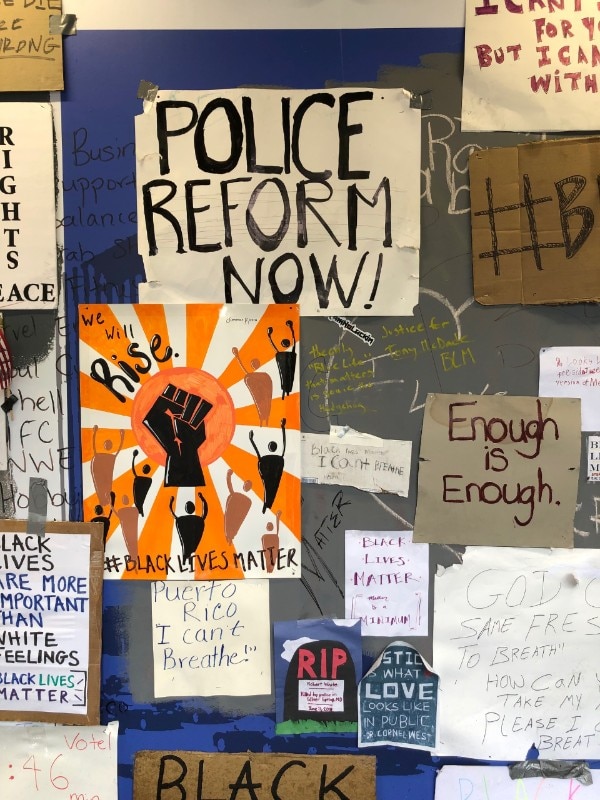
He wanted to “break it down to the bare essentials” where “the definition of life is the heart.” He hopes when people see his work, that it can “inspire unity, love and become a catalyst for human interactions.”
The human interactions that have transpired through Decoy’s career as an artist gave her opportunities to teach art in environments with students who have limited access to resources as well as women who are in the prison system. Her painting DC Hands spreads her message of hope that the children she has taught do not have to grow up in a world where they live in fear, but in a place that is welcoming and supportive and where art and creativity are for all.”
The call for artists on these plywood boards has turned into an even larger scale initiative through Radical Plywood involving Radical Empathy. In just a few days, Tarek explains “I got the artists by just spray painting a call for artists on the plywood next to the original 4 at the BLM Plaza- then they just kept coming in! We now have 14 murals and over 50 artists!” Black Lives Matter Plaza has been a catalyst for the creative community where their art can help spread the messages of the people and create place-making. Urbanistically, the fortified space has dramatically become a welcoming place for a diversity of voices, empowered in part by the art and the statements that it makes for and of the people.


